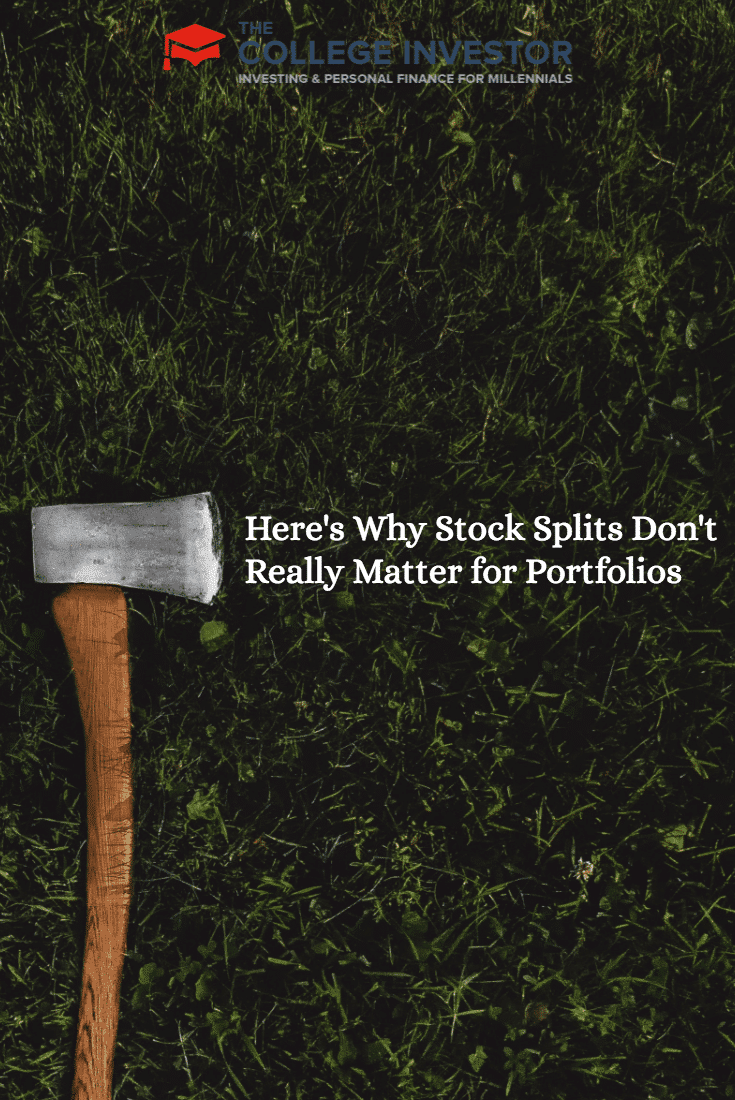A few years ago MasterCard (NYSE: MA) announced that it will be doing a 10-to-1 stock split on its shares.
What's a stock split? If you don't remember, you're not alone — the total number of publicly-traded companies that had stock splits last year was 12. That's down from well over 100 per year a decade ago.
Stock splits are a very rare occurrence, and they can happen in both directions - when existing shares are divided into new shares, or when existing shares are combined into a share (also called a reverse stock split).
Here's what you need to know.
What Is a Stock Split?
A stock split is when a company issues new shares for every existing share. So, in MasterCard's case, they are issuing 10 shares for every 1 share an investor owns. The result? The price per share drops — but nothing more.
For MasterCard, that means that instead of $800 per share, where the company currently trades, it will soon be at $80 per share. It's purely a paperwork thing. You previously had one share at $800, and now you have 10 shares for $80.
If you owned one share of MasterCard, your value would be exactly the same.
A reverse stock split is the exact opposite. Let's use the same math to keep it easy. Say you own 10 shares of a company and they are trading at $80. Well, if there is a 1-to-10 reverse stock split, you'll get one share for every 10 shares you own. Now, you have one share worth $800.
Why Do Companies Do Stock Splits?
So, since it's just a paperwork thing, why bother? Well, in MasterCard's case, they highlighted that they wanted to open themselves up to more mainstream investors buying the stock. When the price of a single share is $800, it makes it hard for individual investors to get involved. Many brokers don't allow you to buy fractional shares, and so your minimum investment in MasterCard right now would have to be $800 for just one share.
By doing a stock split, you now lower the price of a single share of MasterCard to $80 — which is much more manageable for an individual investor.
Reverse stock splits are usually done to bring up a share price - especially if a company is worried about being de-listed from an exchange. For example, the New York Stock Exchange (NYSE) requires that every company that trades on it have a minimum share price of at least $1.00. If a company drops below that $1.00 for a long enough period of time, the NYSE could de-list it and no longer trade it.
To fix it, companies that fall below $1.00 can reverse stock split, reducing their shares but bringing their share price up. A recent reverse stock split was A.H. Belo corp, which did a 1-to-4 reverse split to bring it's price up.
What Are the Arguments Against Stock Splits?
There are two main arguments against stock splits:
- A lower price per share opens the company up to volatility from traders.
- The company has to pay administrative fees to do the stock split, and the split has no real gain for the company or purpose.
Both arguments can be seen as valid. Since more individual investors can get into the stock easier, it does open the company up for more trading. More speculative traders with little capital can get involved — and at a lower overall cost. 100 shares at $80 per share is only $8,000, where it would have been $80,000 before.
Plus, for investors that are always watching a company's bottom line, seeing expenses like a stock split, which don't really add shareholder value, can seem like a waste.
Related: How To Trade And Invest In Stocks
Should Investors Care?
The most compelling argument, however, is performance. So, how have companies that have done stock splits performed since the split? That's the interesting question.
Going back to 1986 to 1996, stocks that split performed 8% better than the S&P 500 the following year.
However, from 1996 to 2011 (the last year data was readily available), stocks that split have simply performed even with the S&P 500.
The bottom line: Stock splits don't matter.
As a whole, investors would be just as well off investing in index funds than looking for companies whose stock split. As for MasterCard, the price of the stock is up, but I attribute that more to the dividend increase and share buy-back program, rather than the split. These other shareholder-value return programs highlight the health of the company, which is a great reason to own the stock. Forget the stock split.
What are your thoughts? Should you pay attention to stock splits?

Robert Farrington is America’s Millennial Money Expert® and America’s Student Loan Debt Expert™, and the founder of The College Investor, a personal finance site dedicated to helping millennials escape student loan debt to start investing and building wealth for the future. You can learn more about him on the About Page or on his personal site RobertFarrington.com.
He regularly writes about investing, student loan debt, and general personal finance topics geared toward anyone wanting to earn more, get out of debt, and start building wealth for the future.
He has been quoted in major publications, including the New York Times, Wall Street Journal, Washington Post, ABC, NBC, Today, and more. He is also a regular contributor to Forbes.
Editor: Clint Proctor Reviewed by: Chris Muller
